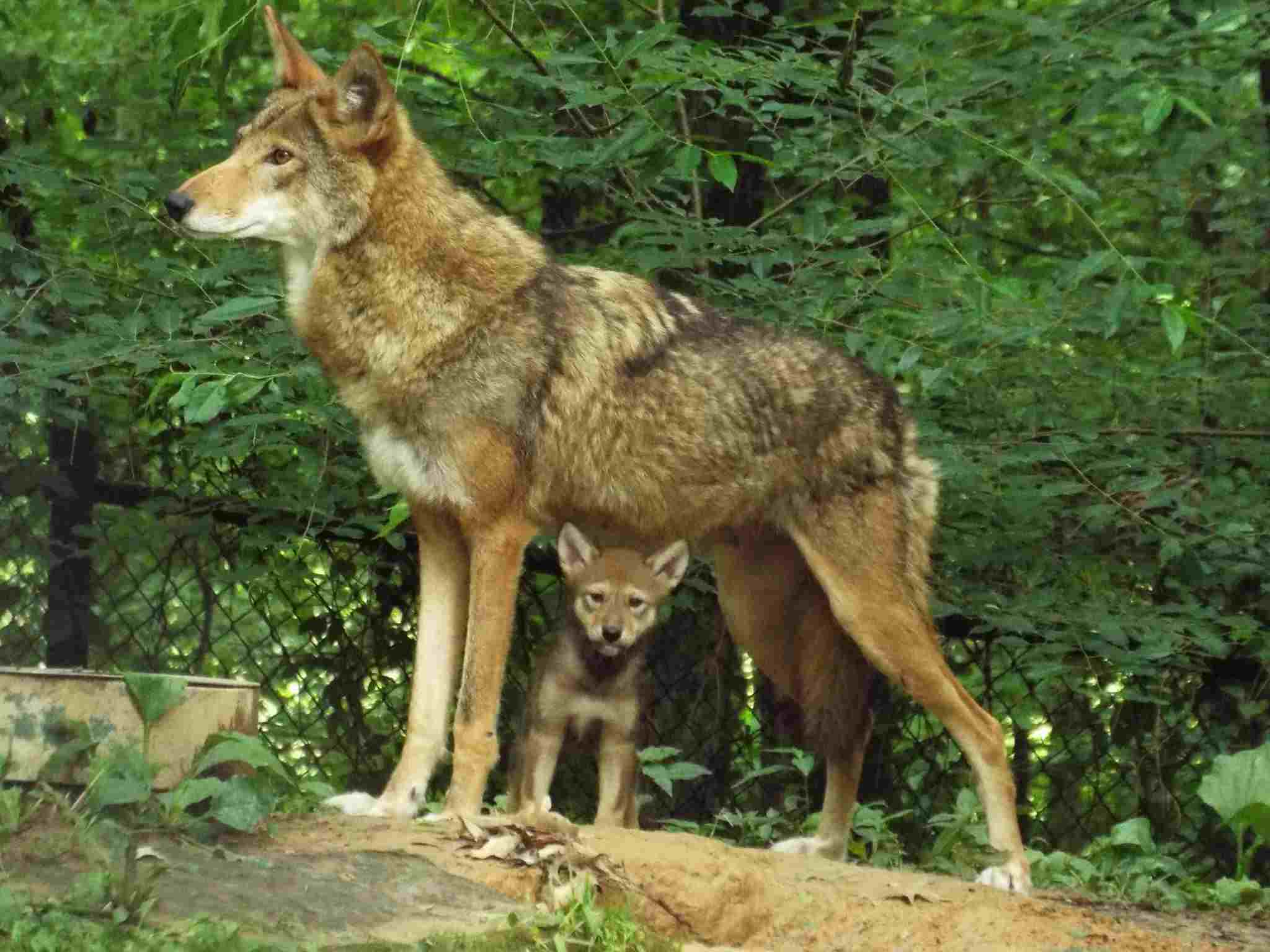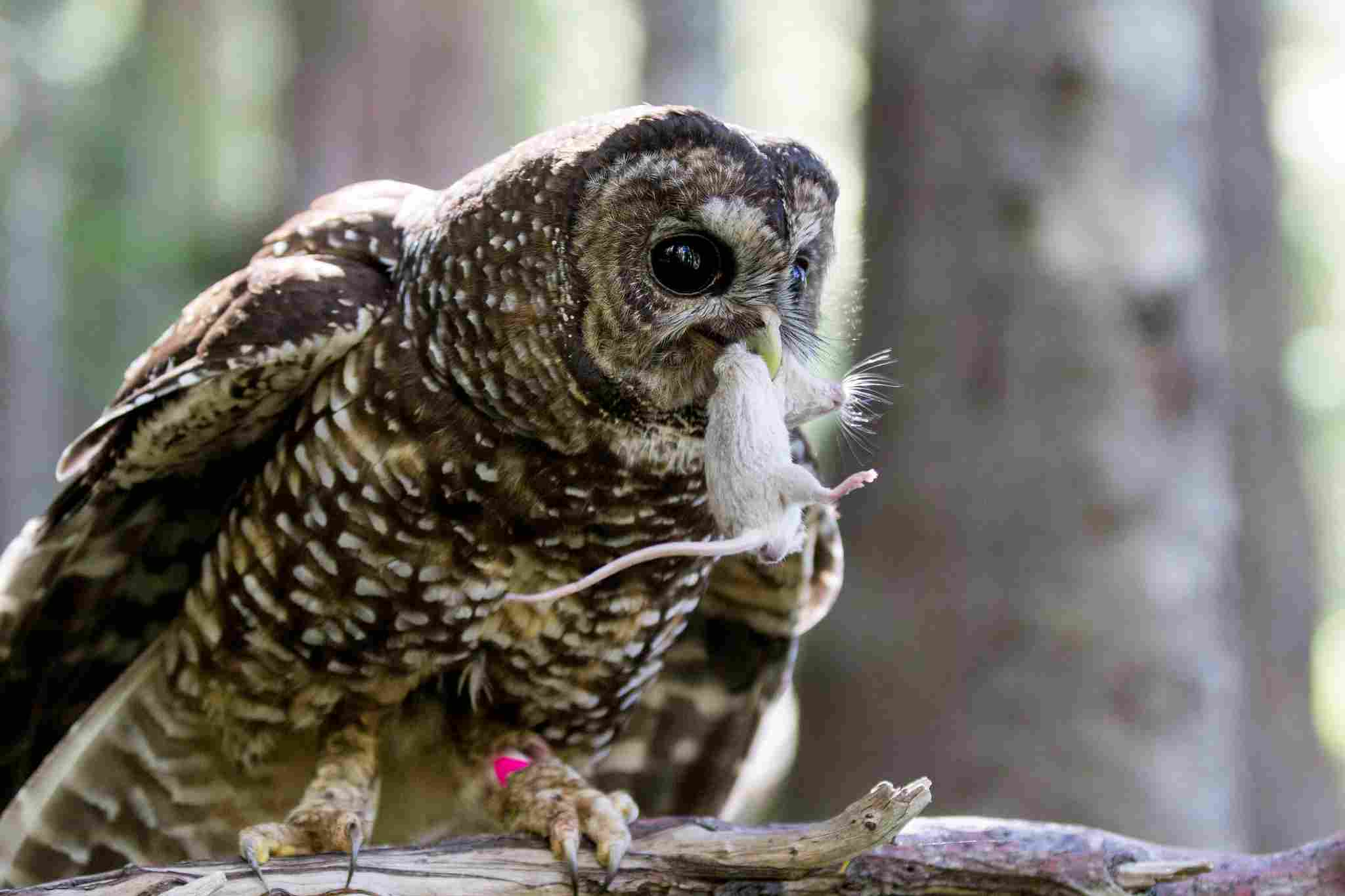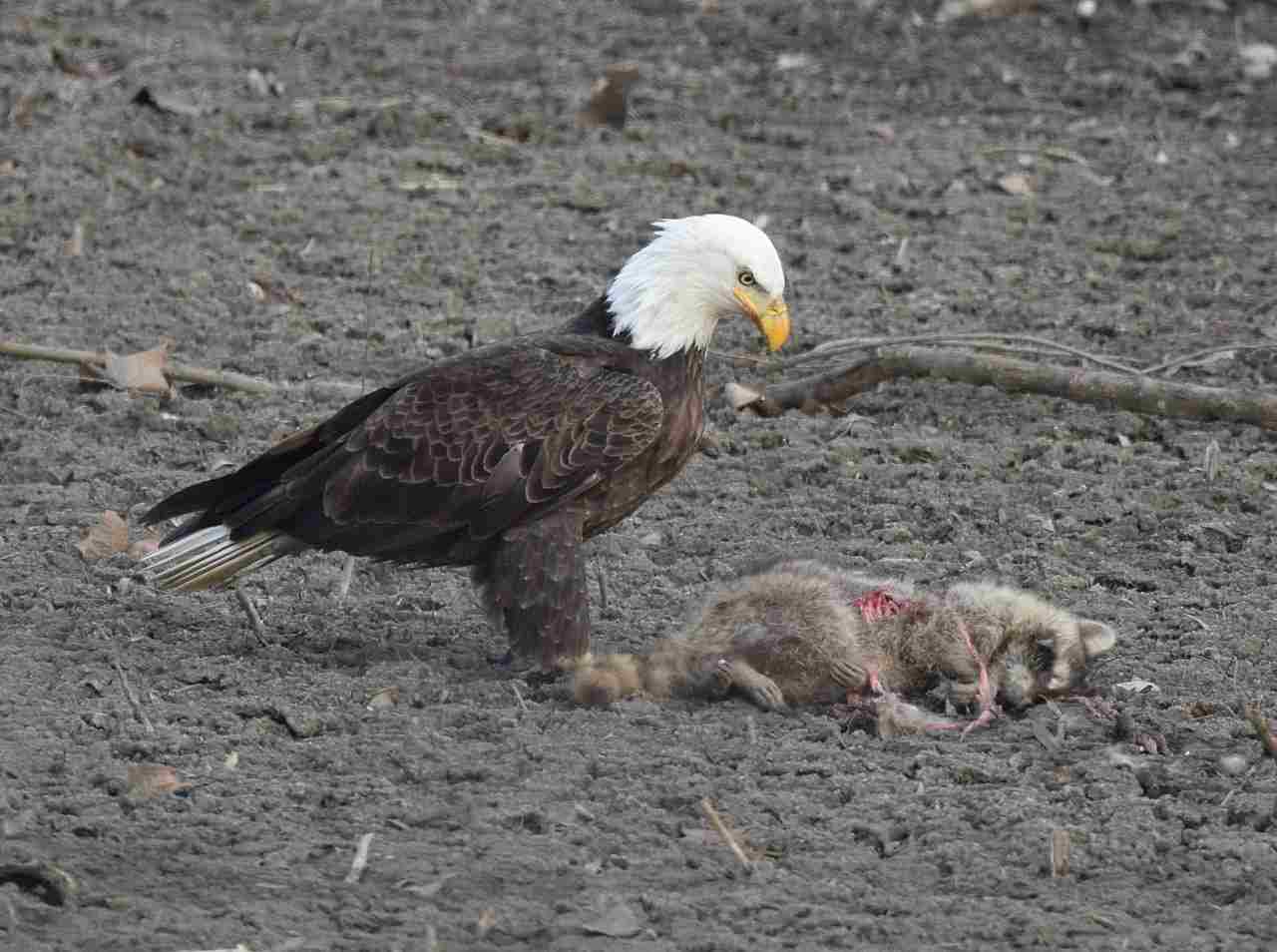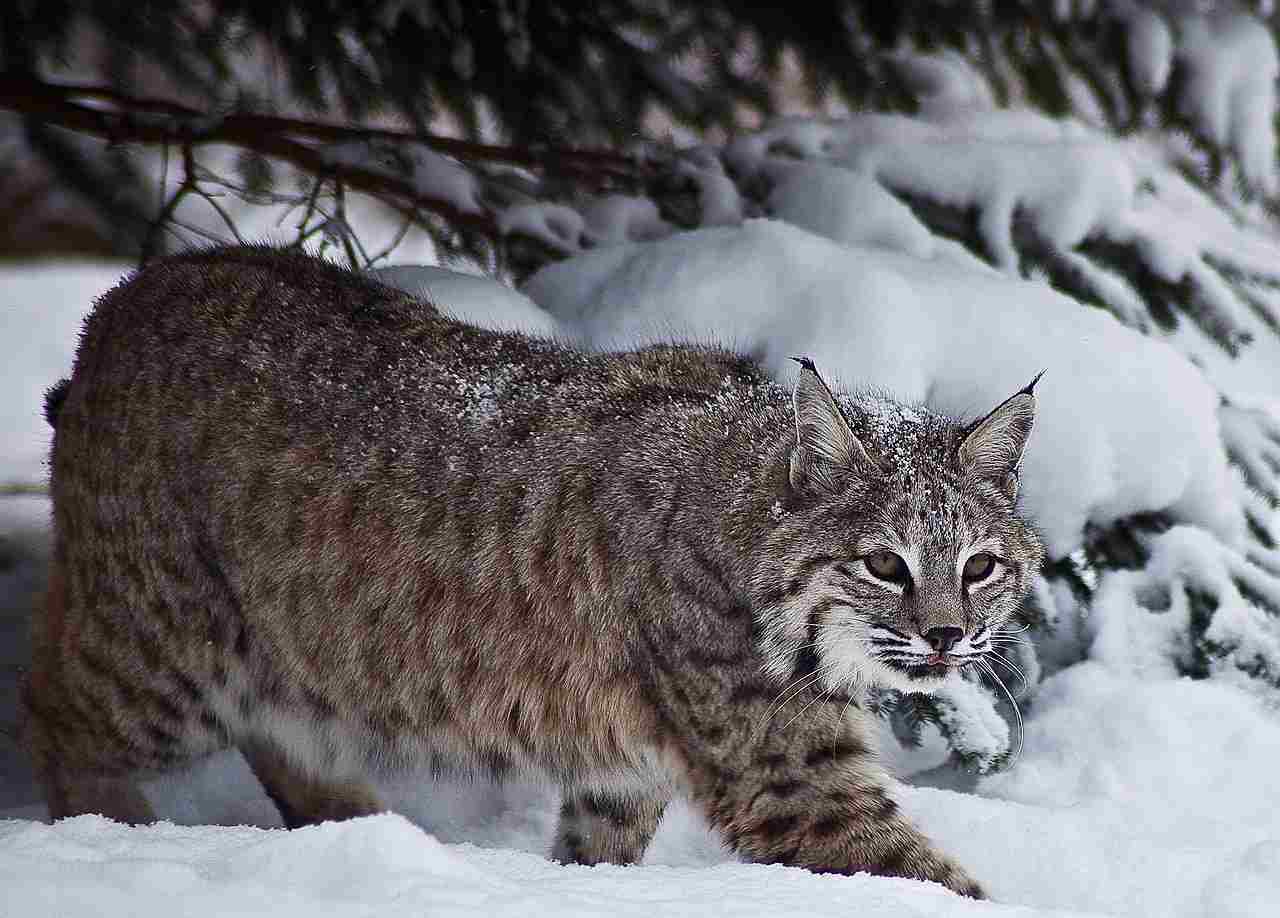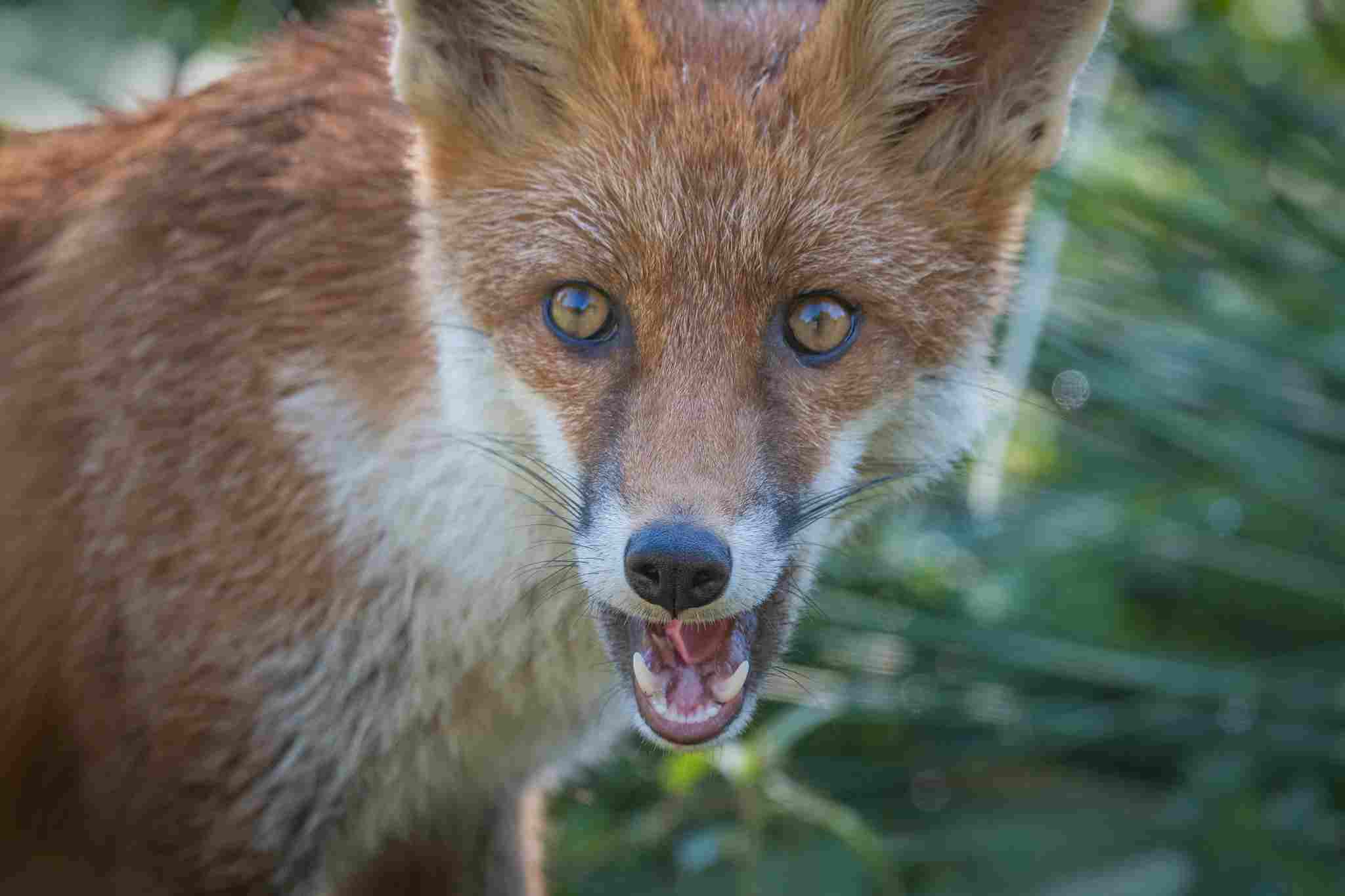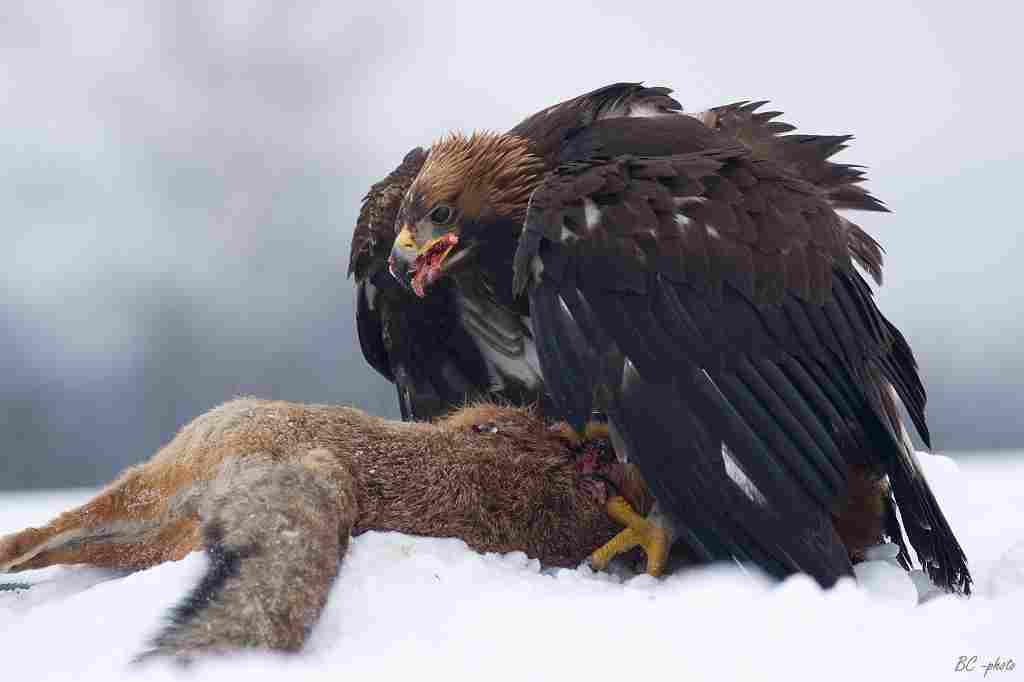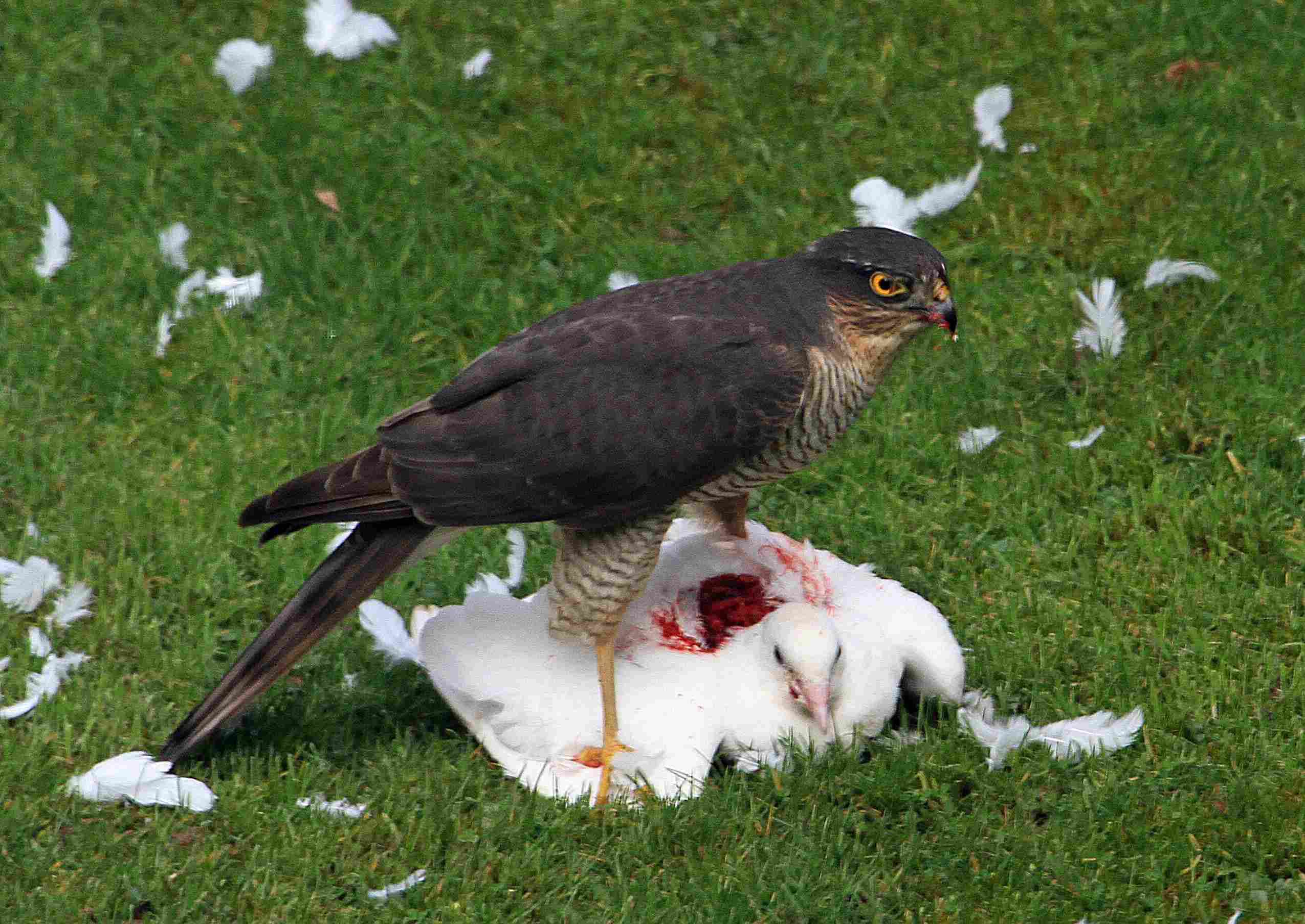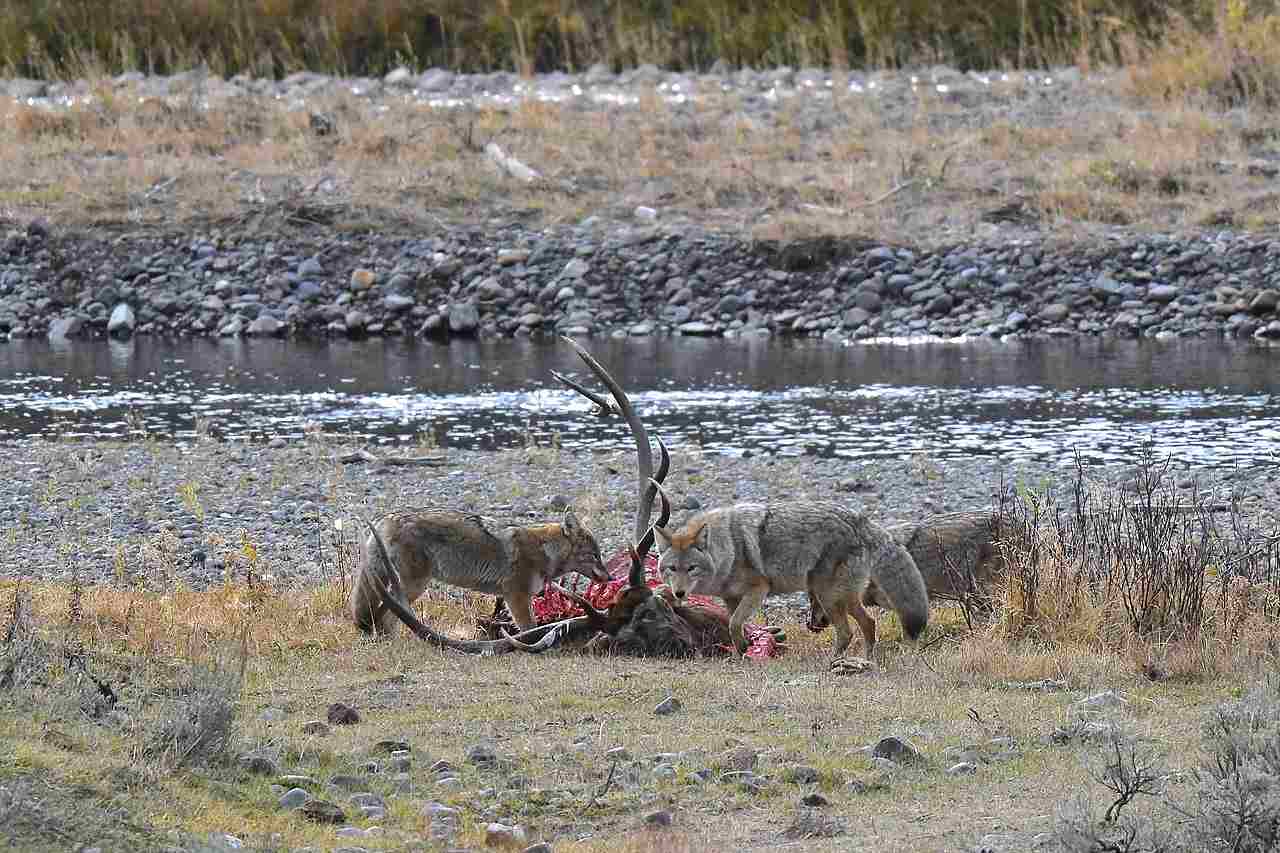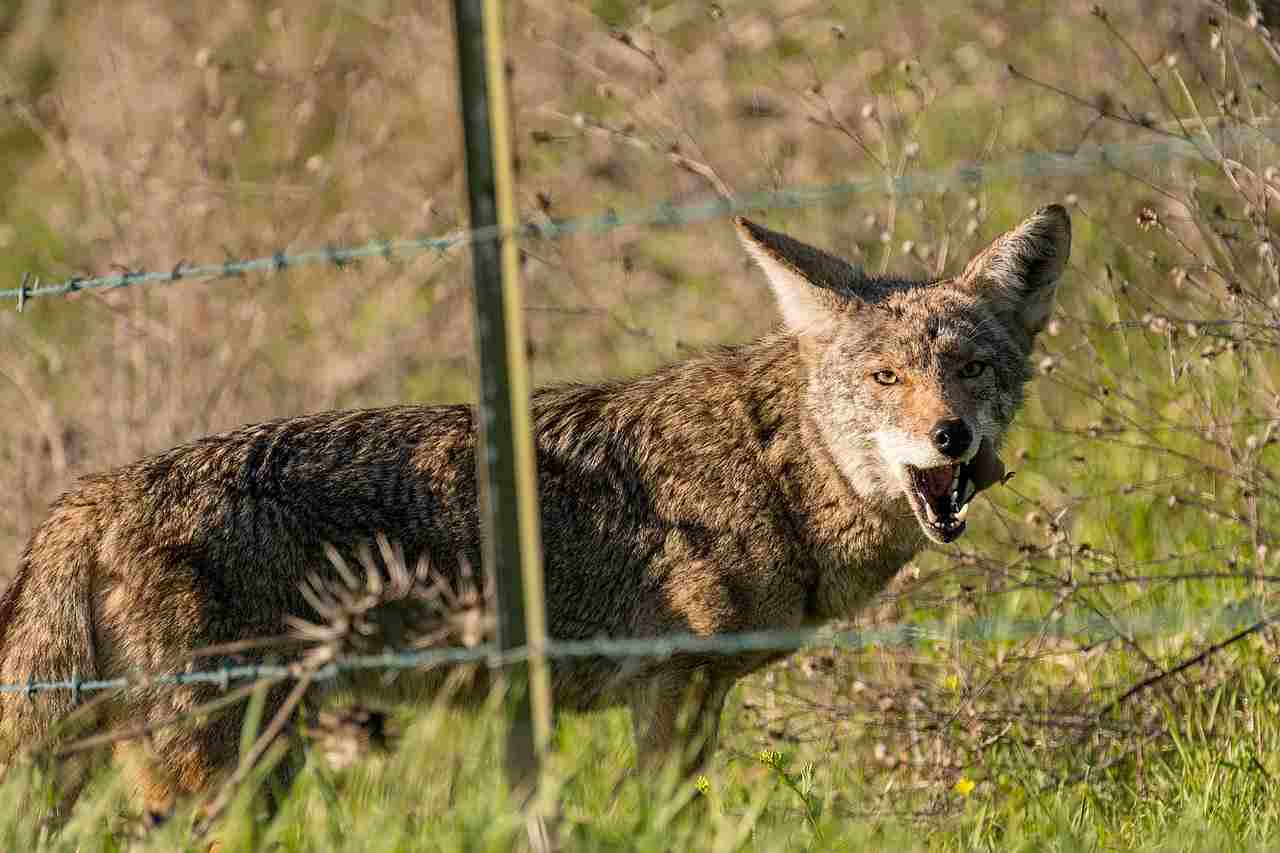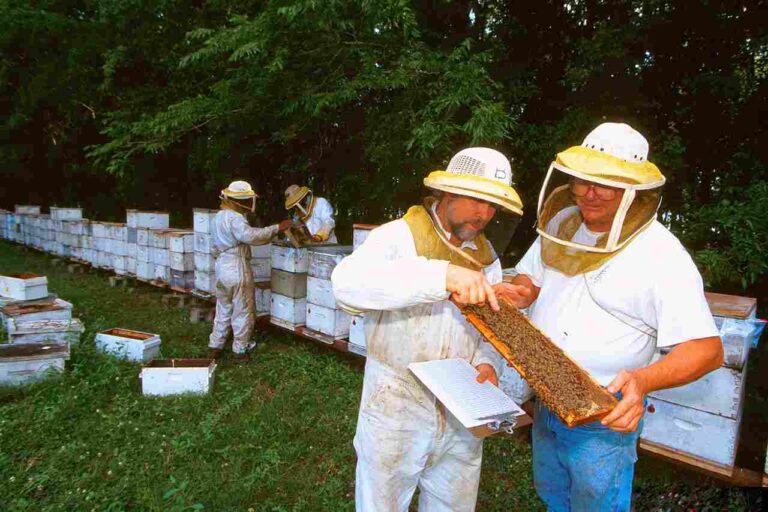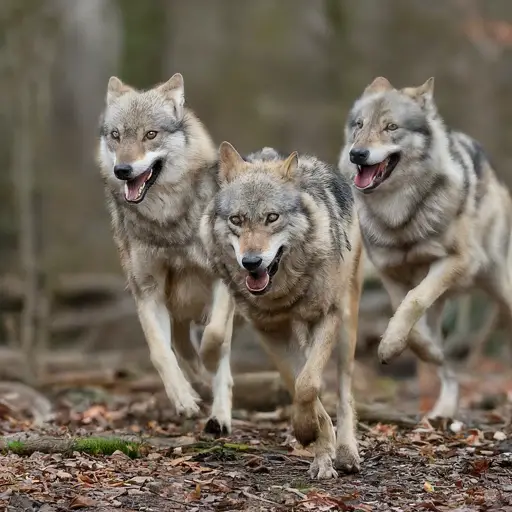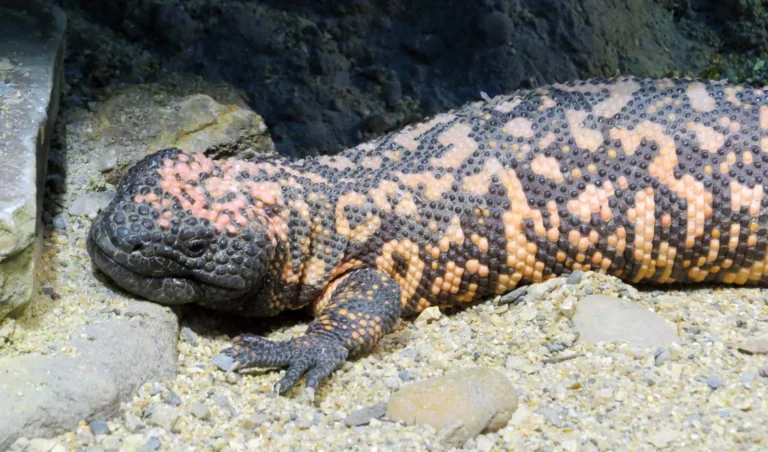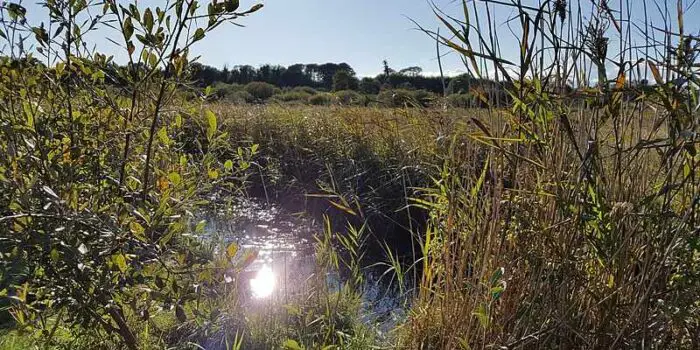13+ Predators In West Virginia And Their Characteristics
Examples of predators in West Virginia include coyotes, bobcats, and black bears. Coyotes are adaptable predators that feed on a variety of food sources but can cause conflicts with humans and their pets. Bobcats are stealthy and solitary, typically avoiding humans, while black bears are omnivorous and sometimes venture near human settlements. Venomous snakes such as copperheads and timber rattlesnakes play important roles in controlling rodent populations but pose risks to humans. Meanwhile, birds of prey like eagles, hawks, and owls contribute to ecosystem balance and are often celebrated for their hunting prowess and beauty.
1. Coyote
Coyotes are highly adaptable predators found throughout West Virginia, thriving in a variety of habitats from forests and farmlands to suburban areas. These intelligent canids are known for their cunning behavior and are often seen hunting alone or in pairs. They are opportunistic feeders, which means they will consume a wide range of foods, including small mammals, birds, insects, fruits, and even human refuse. This flexibility in diet allows coyotes to survive in diverse environments, contributing to their expanding range across the state.
The presence of coyotes in West Virginia has led to a range of interactions with human communities. While they generally avoid humans, they are occasionally known to prey on pets or livestock, which can lead to conflicts. As such, wildlife management officials often work to educate residents on how to coexist with coyotes, emphasizing measures such as securing garbage cans, keeping pets indoors, and not feeding wildlife. Despite these occasional conflicts, coyotes play a vital role in the ecosystem, helping to control populations of smaller mammals and maintain ecological balance.
2. Bobcat
The bobcat, with its distinct tufted ears and short tail, is a native predator found throughout West Virginia. These elusive felines prefer wooded areas and forested regions but are adaptable enough to venture into more open landscapes. Bobcats are primarily solitary creatures, relying on stealth and agility to stalk and capture their prey. They are carnivorous, feeding on small mammals such as rabbits, rodents, and birds, though they will occasionally hunt larger animals like deer fawns when the opportunity arises.
Bobcats are primarily nocturnal, with peak activity during dawn and dusk, making them less likely to be seen by humans. Despite their secretive nature, they play a crucial role in controlling populations of smaller mammals, thereby contributing to the overall health of the ecosystem. Due to their elusive behavior, bobcats rarely pose a direct threat to humans or livestock. However, it’s essential to maintain a respectful distance and avoid approaching these wild animals, as they are still capable of defending themselves if threatened.
3. Cougar
Cougars, also known as mountain lions, are among the largest predators in West Virginia, capable of covering vast territories in search of food. These magnificent cats are solitary by nature and prefer habitats with dense vegetation and rocky terrain, where they can stalk their prey undetected. Cougars are apex predators, typically hunting deer, but they are also known to take down smaller animals such as raccoons and beavers. Their presence in an ecosystem helps maintain the balance by keeping herbivore populations in check.
While cougar sightings are rare due to their elusive behavior, they can travel long distances and have been known to venture near human settlements. This has led to occasional conflicts, especially when cougars target livestock or pets. Wildlife officials often work to educate the public on how to avoid encounters with these predators, advising against leaving food outdoors and ensuring pets are secured. Despite their potential for conflict, cougars are an essential component of West Virginia’s wildlife, contributing to the biodiversity and health of the state’s natural landscapes.
4. Wolf
Wolves, once native to West Virginia, played a critical role in the state’s ecosystem, but their populations have been significantly reduced due to habitat loss and human activity. Although gray wolves are no longer found in the wild in West Virginia, their historical presence shaped the region’s wildlife dynamics. Wolves are social animals, typically forming packs with complex hierarchies, and they are known for their cooperative hunting strategies. These apex predators primarily feed on large ungulates like deer and elk, but they also consume smaller mammals, providing a natural form of population control.
Efforts to reintroduce or conserve wolf populations are underway in some parts of the United States, aiming to restore the ecological balance that these predators once maintained. Wolves play a crucial role in regulating prey populations and fostering biodiversity. In West Virginia, their absence has led to a different predator-prey dynamic, but their historical significance serves as a reminder of the interconnectedness of all species within an ecosystem. Although not currently part of West Virginia’s wildlife, the wolf’s legacy remains an important chapter in the state’s natural history.
5. Fox
Foxes are versatile and cunning predators found throughout West Virginia, thriving in a variety of habitats including forests, farmlands, and even urban areas. The state is home to both the red fox and the gray fox, each with distinct characteristics. Red foxes are known for their vibrant red fur and bushy tails, while gray foxes are more subdued in color and are one of the few canids capable of climbing trees. Foxes are omnivorous, feeding on small mammals, birds, insects, fruits, and even human scraps, which contributes to their adaptability in diverse environments.
Despite their common presence in West Virginia, foxes are generally shy and avoid direct contact with humans. They play an essential role in controlling populations of small mammals and other prey species, contributing to the overall balance of the ecosystem. However, interactions with humans can occur, especially when foxes venture into suburban areas in search of food. To mitigate potential conflicts, it’s recommended to secure trash cans, avoid leaving pet food outdoors, and keep pets on a leash during walks. These practices can help ensure that foxes and humans coexist peacefully.
6. Eagle
Eagles are majestic birds of prey found in West Virginia, with the bald eagle being the most recognizable species. These large raptors are typically associated with expansive territories near rivers and large bodies of water, where they hunt for fish, their primary food source. However, eagles also scavenge for carrion and occasionally prey on small mammals or birds. Their impressive wingspan and keen eyesight make them formidable predators, and their presence in West Virginia signifies a healthy and vibrant ecosystem.
The resurgence of the bald eagle population in West Virginia is a testament to successful conservation efforts and environmental awareness. Eagles are often seen soaring high above, scanning the landscape for prey or suitable nesting sites. While they generally avoid human contact, they can be observed from a distance by birdwatchers and nature enthusiasts. Protecting their habitats and minimizing disturbances during nesting season are crucial for ensuring the continued growth of their populations. As symbols of strength and freedom, eagles are a cherished part of West Virginia’s wildlife.
7. Hawk
Hawks are a diverse group of birds of prey that inhabit West Virginia’s forests, fields, and mountainous regions. These raptors are known for their sharp talons and keen eyesight, which allow them to spot prey from great distances. The state is home to several species of hawks, including the red-tailed hawk and the Cooper’s hawk. Red-tailed hawks are commonly seen soaring in the sky or perched on high branches, while Cooper’s hawks are more likely to be found in wooded areas, hunting smaller birds and mammals.
Hawks play a crucial role in maintaining the balance of the ecosystem by controlling populations of smaller animals and birds. They are often seen hovering above open fields, ready to swoop down on unsuspecting prey. While they typically avoid human contact, hawks may occasionally venture into urban areas, especially where food sources are plentiful. To foster coexistence, it’s important to protect their habitats and avoid disturbing them during nesting season. Hawks’ grace and hunting prowess make them a captivating sight for birdwatchers and nature enthusiasts in West Virginia.
8. Owl
Owls are fascinating nocturnal predators found throughout West Virginia, known for their silent flight and remarkable night vision. The state is home to several owl species, including the Great Horned Owl, Barred Owl, and Eastern Screech Owl. These birds of prey primarily hunt at night, using their acute hearing and stealth to locate and capture prey. Owls are opportunistic feeders, often preying on small mammals, birds, and insects. They are also known to take fish and amphibians depending on the availability of food sources.
Owls play a critical role in the ecosystem by helping to control rodent populations. They often nest in tree cavities or other secluded spots, providing shelter for their young while maintaining a low profile during the day. Despite their secretive nature, owls can be heard calling during the night, with their distinct hoots and screeches adding to the ambiance of West Virginia’s wilderness. To help protect these unique predators, it’s important to preserve their habitats and avoid disturbing nesting sites. Owls are a beloved symbol of mystery and wisdom, captivating the imagination of nature lovers and birdwatchers alike.
9. Shrew
Shrews are small, insectivorous mammals found throughout West Virginia, often mistaken for rodents due to their diminutive size and appearance. These tiny predators are known for their high metabolism, requiring them to eat almost constantly. Shrews primarily feed on insects, worms, and other small invertebrates, but they can also prey on smaller vertebrates such as frogs and small lizards. Their rapid metabolism and voracious appetite make them key players in controlling insect populations, contributing to the ecological balance.
Despite their small size, shrews are highly aggressive when it comes to hunting and defending their territory. They have sharp teeth and a keen sense of smell, allowing them to locate food even in the dark. Shrews are typically active during the night or twilight hours, and their rapid movements make them difficult to spot. While they play a vital role in the ecosystem, shrews are not commonly seen by humans due to their size and nocturnal habits. Preserving their natural habitats helps ensure their survival and continued contribution to West Virginia’s diverse wildlife.
10. Copperhead
Copperheads are venomous snakes found in West Virginia, known for their distinctive copper-colored heads and banded patterns. These snakes are commonly found in forested areas, rocky hillsides, and near water sources. Copperheads are ambush predators, lying in wait for prey such as small mammals, birds, and amphibians. Their venom, while potent, is not typically fatal to humans, but a bite can cause severe pain and tissue damage. As such, it’s important to exercise caution when exploring areas where copperheads may be present.
Despite their fearsome reputation, copperheads play a significant role in controlling rodent populations, contributing to the health of the ecosystem. They generally avoid human contact, preferring to remain hidden in dense vegetation or beneath rocks. If encountered, it’s crucial to give them a wide berth and avoid disturbing them. Education and awareness about copperheads are key to reducing snakebites and ensuring safety. Understanding their behavior and respecting their role in the environment helps foster coexistence with these intriguing reptiles in West Virginia.
11. Timber Rattlesnake
The Timber Rattlesnake is another venomous snake species found in West Virginia, recognized by its distinctive rattle at the end of its tail and its varying coloration, from gray to dark brown with bold, black crossbands. These snakes inhabit forested areas, rocky outcrops, and mountain ridges, where they can find ample prey and shelter. Timber Rattlesnakes are ambush predators, primarily preying on small mammals such as mice and squirrels. Their rattle serves as a warning signal to potential threats, giving them the opportunity to avoid confrontation.
Timber Rattlesnakes are crucial to the ecosystem, helping to control rodent populations. However, their presence can pose a risk to humans, particularly when encountered unexpectedly during outdoor activities. To minimize the chances of a rattlesnake bite, it’s advisable to stay on established trails, wear appropriate footwear, and be cautious when moving rocks or debris. Despite the risk they pose, Timber Rattlesnakes are a protected species in West Virginia, reflecting the state’s commitment to preserving its native wildlife while promoting safety and awareness among residents and visitors.
12. Black Widow
Black Widows are venomous spiders found in West Virginia, identifiable by their glossy black bodies and the distinctive red hourglass shape on the underside of their abdomens. These spiders prefer secluded areas such as woodpiles, garages, and sheds, where they can build their webs undisturbed. Black Widows are carnivorous, feeding on insects and other small invertebrates that become trapped in their webs. Their venom is potent, capable of causing severe pain and muscle cramps, but bites are rarely fatal to humans due to prompt medical treatment and low venom injection.
Black Widows play a role in controlling insect populations, but their presence can be alarming to humans. To reduce the risk of encountering these spiders, it’s essential to take precautions such as wearing gloves when handling firewood or other materials where they might be hiding. If bitten, seeking immediate medical attention is crucial for proper treatment and recovery. Understanding the behavior of Black Widows and respecting their place in the ecosystem helps maintain a balance between safety and conservation in West Virginia’s natural habitats.
13. Black Bear
Black Bears are among the largest mammals in West Virginia, known for their massive size, dark fur, and adaptability. These omnivorous creatures inhabit forested areas, where they forage for a wide range of foods including berries, nuts, insects, and small mammals. Black Bears are also known to scavenge for food, and their incredible sense of smell leads them to areas where food sources are plentiful, including human settlements. This behavior can lead to conflicts with humans, especially when bears raid trash cans or food storage areas.
Despite their potential for conflict, Black Bears play a significant role in the ecosystem by dispersing seeds and controlling insect populations. They are generally solitary animals, with females raising cubs for the first couple of years before they become independent. To minimize conflicts with bears, residents are advised to secure trash cans, avoid leaving pet food outdoors, and use bear-resistant containers when camping. Black Bears are a protected species in West Virginia, and their conservation is vital to maintaining the state’s natural heritage. Proper education and awareness can help ensure a peaceful coexistence between humans and these impressive predators.
*Summary
-
Coyote:
-
Highly adaptable, found in various habitats.
-
Opportunistic feeder, consuming small mammals, birds, insects, fruits, and refuse.
-
Can cause conflicts with humans, particularly with pets and livestock.
-
-
Bobcat:
-
Solitary, stealthy, and found in forested areas.
-
Feeds on small mammals, birds, and occasionally larger animals.
-
Plays a role in maintaining ecological balance, typically avoids human contact.
-
-
Cougar:
-
Large, solitary predator; historically native to West Virginia.
-
Hunts primarily deer but also smaller mammals.
-
Rarely seen; can cause conflicts with humans when approaching settlements.
-
-
Wolf:
-
Historically native to West Virginia; no longer found in the wild.
-
Social, pack-based predators that controlled large ungulate populations.
-
Their absence has shifted predator-prey dynamics in the state.
-
-
Fox:
-
Versatile and found in various environments, including urban areas.
-
Red and gray foxes inhabit the state.
-
Play a role in controlling small mammal populations; can cause occasional conflicts with humans.
-
-
Eagle:
-
Majestic birds of prey, primarily bald eagles, found near rivers and large water bodies.
-
Feed mainly on fish but can scavenge or hunt smaller mammals and birds.
-
Conservation success story in West Virginia; generally avoid human contact.
-
-
Hawk:
-
Diverse group of birds of prey, including red-tailed hawks and Cooper’s hawks.
-
Hunt smaller mammals and birds; important for ecosystem balance.
-
Usually seen in forests and open fields; require protection during nesting season.
-
-
Owl:
-
Nocturnal predators with silent flight and exceptional night vision.
-
Several species found in West Virginia; primarily hunt small mammals and birds.
-
Play a role in controlling rodent populations; typically active at night.
-
-
Shrew:
-
Small insectivorous mammals with high metabolism.
-
Feed on insects, worms, and smaller vertebrates.
-
Contribute to controlling insect populations; rarely seen by humans due to size and activity patterns.
-
-
Copperhead:
-
Venomous snake with a distinctive copper-colored head and banded patterns.
-
Ambush predator feeding on small mammals and birds.
-
Their presence can pose risks to humans, but they play a crucial role in controlling rodent populations.
-
-
Timber Rattlesnake:
-
Venomous snake with a rattle on its tail and varying coloration.
-
Ambush predator feeding on small mammals.
-
Important for controlling rodent populations but can pose risks to humans.
-
-
Black Widow:
-
Venomous spiders with a glossy black body and red hourglass pattern.
-
Carnivorous, feeding on insects and other invertebrates.
-
Can cause concern due to potent venom; precautions advised when handling woodpiles and other hiding spots.
-
-
Black Bear:
-
Among the largest mammals in West Virginia; omnivorous.
-
Forage for a wide range of foods, often venture near human settlements.
-
Play a role in dispersing seeds and controlling insect populations; potential for conflict with humans.
-
| Predator | Description |
| Coyote |
Highly adaptable, opportunistic feeder, can conflict with humans, particularly with pets/livestock.
|
| Bobcat |
Solitary and stealthy, primarily found in forested areas, feeds on small mammals and birds, avoids humans.
|
| Cougar |
Large and solitary, hunts deer, historically native to West Virginia, can cause conflict when near humans.
|
| Wolf |
Historically native, social pack-based predators, controlled large ungulate populations, no longer in the wild.
|
| Fox |
Versatile and adaptable, red and gray varieties, play a role in controlling small mammal populations.
|
| Eagle |
Majestic birds of prey, mainly bald eagles, feed on fish, successful conservation efforts.
|
| Hawk |
Diverse group of birds of prey, important for ecosystem balance, require protection during nesting season.
|
| Owl |
Nocturnal, silent flight, primarily hunt small mammals, contribute to controlling rodent populations.
|
| Shrew |
Small, insectivorous, high metabolism, control insect populations, rarely seen by humans.
|
| Copperhead |
Venomous snake, distinctive copper-colored head, ambush predator, can pose risks to humans.
|
| Timber Rattlesnake |
Venomous snake, ambush predator, controls rodent populations, can pose risks to humans.
|
| Black Widow |
Venomous spider with a red hourglass pattern, can cause concern due to potent venom, precautions advised.
|
| Black Bear |
Among the largest mammals, omnivorous, can conflict with humans, play a role in dispersing seeds and controlling insect populations.
|
